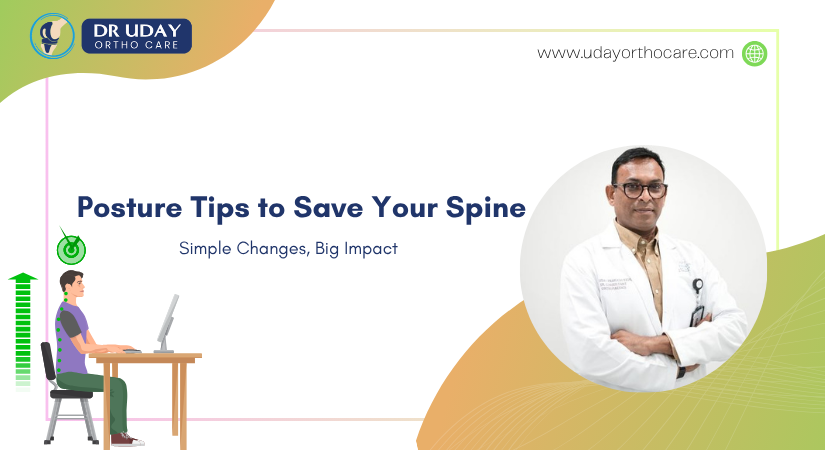A Complete Guide To Orthopedic Trauma: Symptoms and Treatment Options

Orthopedic trauma is a serious injury that influences the bones, muscles, ligaments, joints, and tendons. Such wounds arise from diverse scenarios, such as accidents, falls, sports exercises, and serious collisions. Those experiencing this condition require quick medical care to avoid complications and advance healing.
Orthopedic trauma has negative effects on both mobility and quality of life so proper diagnosis stands as a fundamental requirement. This blog will help you know the causes, signs, and treatment options of this condition in detail.
Common Causes of Orthopedic Trauma
Orthopedic trauma develops as a result of different incidents including:
- Slipping and falling
- Sudden twisting motions
- Sports accidents
- Car accidents
- In-home accidents
- Work accidents
- A direct blow to the body
Individuals who have osteoporosis, severe arthritis, or weakening eyesight are at an increased risk for orthopedic traumatic injuries because their condition makes them more likely to fall. A very active lifestyle increases your chances of developing such physical traumas.
Types of Orthopedic Trauma
The most usual traumatic injuries requiring orthopedic treatment include:
- Fractures
- Dislocations
- Ligament Injuries
- Tendon Ruptures
- Crush Injuries
- Soft Tissue Injuries
How to Identify Orthopaedic Trauma Symptoms
People with a history of skeletal issues must identify the indications of orthopedic trauma. Every sign requires focused attention because some signs are obvious and others remain hidden yet need specialized assistance.
People need to recognize all indicators of orthopedic trauma. Here are several important Orthopaedic Trauma Symptoms that you should monitor:
- Ache, which might be a mild throb or a fierce sting.
- Warmth and color change over the hurt spot.
- Puffiness and soreness when touched.
- Loss of feeling or a tight range of motion in the hurt limb or joint.
- Struggling to put weight on a leg, foot, or arm.
- Blood loss, especially with a bone protrusion, pointing to an open break
Fast medical assistance becomes essential once you detect the mentioned warning signs. Medical intervention is essential rather than attempting personal examination or self-treatment of the problem.
Diagnosis and Treatment Options
The diagnostic process for orthopedic trauma includes physical checks, imaging tests like X-rays, MRIs, and CT scans, and the patient’s past medical information evaluation. The treatment approach depends upon the injury severity. Some of the treatment options are:
Non-Surgical Treatments
● Immobilization
Healing requires patients to undergo immobilization through splints, braces, or casting support.
● Physical Therapy
Performing strengthening exercises to regain mobility and functional abilities.
● Pain Management
Medications and suitable lifestyle modifications for reducing discomfort.
● RICE Therapy (Rest, Ice, Compression, Elevation)
This is used to treat minor injuries and reduce swelling and pain.
Surgical Interventions
● Open Reduction and Internal Fixation (ORIF)
Medical professionals use metal plates, screws, or rods to stabilize fractures.
● Arthroscopic Surgery
This is a minimally invasive approach to address joint trauma.
● Joint Replacement
Patients with severe joint damage get their affected joints replaced with prosthetic implants.
● External Fixation
This is a short-term stabilization technique for complicated fractures by using an external frame.
● Tendon or Ligament Reconstruction
This is vital for regaining joint stability after major injuries.
The Importance of Choosing the Right Specialist
All orthopedic trauma patients need specialized medical treatment by an experienced orthopedic surgeon. People in Hyderabad must seek diagnosis and treatment from the best orthopedic surgeon in Hyderabad to ensure accurate medical care. A skilled specialist develops individualized rehabilitation programs that accelerate recovery time and restore movement. People who select surgeons with extensive experience reduce the risk of issues and enhance long-term recovery.
Preventing Orthopaedic Trauma- Strategies and Tips
Accidents are unpredictable. However, there are various strategies to prevent orthopedic trauma, including:
- Do not avoid wearing the seat belt when you are driving a vehicle.
- Using a helmet becomes mandatory when biking or in sports where there are chances of head injury.
- Players engaged in rough sports should use the correct protective equipment.
- Warm up before every physical activity.
The implementation of these safety measures significantly reduces the chances of getting injuries. Learning to recognize orthopedic trauma indications remains equally vital since it enables you to act fast during emergencies.
Conclusion
Orthopedic trauma subjects people to decreased quality of life but prompt medical care leads to suitable treatments and recovery progress. The appropriate consultation with an expert orthopedic specialist remains vital for treating any kind of fracture or intricate joint injury. Patients who receive advanced medical and individualized rehabilitation plans can restore their movements and continue conducting their regular activities. One of the most trusted medical professionals, Dr. T Uday Prakash Reddy, provides complete orthopedic therapy to help his patients get back a pain-free and active life.
Book a consultation with him now if you are undergoing this condition!






